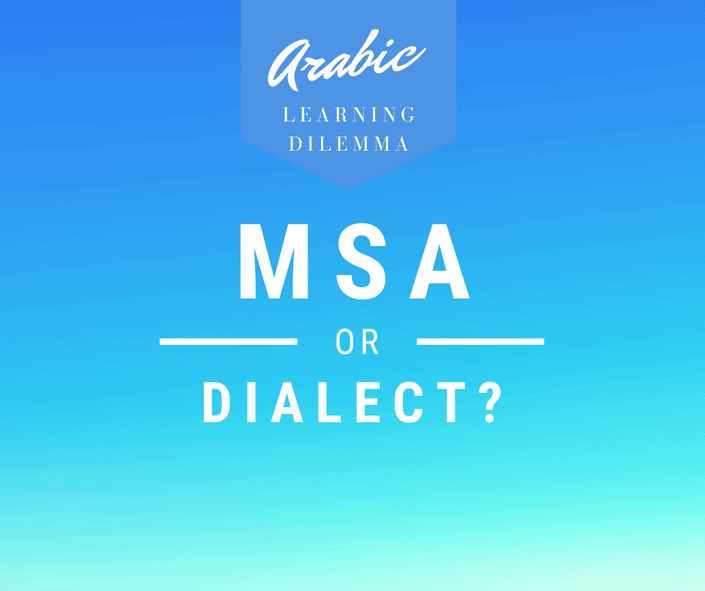One big challenge facing learners of Arabic is finding the right book to learn a very different language such as Arabic in an ocean of information on the Web.
The best approach to look for the best textbook to learn Arabic on your own is not only seeking good content but also the most suitable book for your own situation.
Nowadays, a lot of people are studying Arabic and foreign languages on their own. The truth is that most textbooks were designed for school setting, not for self-study, which often leads to many surprises down the road.
However, I am going to share with you a shortlist of some of the best Arabic textbooks that I either used myself to teach or worked with students who used them.
While there are dozens of Arabic textbooks out there, I chose to provide reviews of only books I have touched and worked with.
I am listing them below starting with the most preferred in a descending order.
Of course, not all Arabic textbooks are right for everyone. There are books for Modern Standard Arabic, Arabic dialects or both.
Some learners of Arabic want to study Arabic on their own, whereas others will need the help of a teacher.
I therefore broke them down into two categories.
The first list is for self-study textbooks that wouldn’t require the assistance of an instructor.
The second list contains Arabic textbooks that need some level of assistance from an Arabic tutor.
Table of Contents
Best textbooks for Arabic self-study
1. Living Language Arabic: Complete Edition:
This textbook is unique in the sense that it is a package that contains four books with 46 lessons ( associated exercises, grammar, script guide); nine audio CDs (vocabulary, listening exercises); and free access to Arabic online learning resources (quizzes and flashcards).
The lessons and materials are all organized into essential, intermediate and advanced level sub-packages.
This is an ideal package for anyone self-studying Modern Standard Arabic only.
If you are trying to learn any Arabic dialect, this is not the right book for it. But there are plenty of other books for colloquial Arabic.
Pros:
- Very well organized, rich content, progressive lessons.
- The rich digital media and website are perfect for self-study.
Cons:
- Only MSA . This should not be really a problem if you are only interested in MSA.
- There is no answer key to the questions.
2. Alif Baa
This book is produced by the reputable Georgetown University Press and it takes advantage of their school of Middle Eastern and Islamic studies.
It’s a good resource for the absolute Arabic beginner to learn the basic arabic letters and sounds and to be able to write simple words and sounds, in addition to gaining basic vocabulary.
It offers around 200 vocabulary words in their written and spoken formats to include most common phrases and expressions that you may need for your social day-to-day social interactions.
This includes street signs that you will likely encounter on any Arab city or road. The digital media that comes with the book is an invaluable source. There is also searchable repository of English-Arabic-English glossary that will come very handy
Pros
- The digital media and website access make it perfect for those who self-study. It helps with the pronunciation and offers other activities to enhance learning without needing a teacher. This is one of the things that set this book aside.
- It introduces vocabulary in MSA, Egyptian dialect and Syrian dialect, two of the major dialects in the Arab world. This is perfect for those aiming for more than just MSA.
- This is perfect for self-learners of Arabic
Cons
- The only issue with this book is that the answer key is sold separately, resulting in an additional cost. However, it’s most likely not needed.
3. Mastering Arabic 1 with 2 Audio CDs, Third Edition Third Edition
This third edition is another perfect book for anyone studying Modern Standard Arabic without a teacher. The Arabic lessons are organized in a naturally progressive pace that allows for an enjoyable self-paced learning experience .
The Arabic content taught in this book is suitable for the absolute beginner until early intermediate level.
It’s organized in theme-based lessons that include conversation and reading comprehension, Arabic grammar, vocabulary and the Arabic script exercises.
Pros:
- The digital media and access to their websites provide a big volume of audiovisual products, which helps with pronunciation and content variety.
- It’s perfect for independent learners of Arabic who don’t have access to an instructor.
- The overall content is filled with humor and fun, varied content.
Cons:
- It could have used multiple rounds of proofreading to fix the sporadic typos in the book, although they don’t affect the learning experience. It just bothers me as a teacher of Arabic.
- “Dictionary work” drill is unnecessary. It’s an overkill, I think, especially that there are plenty of free and high-quality Arabic online dictionaries such as Almaany.
4. Basic Arabic Workbook
This book is primarily made for studying Modern Standard Arabic by focusing on the practical understanding of the Arabic language. There’s a focus on the communication needs of professionals and students at the workplace. The approach in this book is to synthesize Arabic grammar rules for the sake of simplicity while increasing in difficulty as you advance through the book.
Not for beginners, but this is a perfect for aspiring foreign service students applicants, college students , diplomacy , politics , media …
Pros:
- Progressive , easy-to follow, chapters divided across various themes, theme-based vocab lists including politics, economy and geography.
- Great resource for practical grammar, well explained..
Cons:
- Standard Arabic only
- Not suitable for the absolute beginner. Before using this book, learn the basic reading and writing.
This book combines well with an introductory book like Alif Baa .
- This book uses short pronunciation, skipping the full vocalization of word endings as is customary in Quranic Arabic, for example. However, from a practical point, that’s what native speakers use (short pronunciation) in real life.
Unless it is important to you, this will not hinder your Arabic fluency and truthfully is not needed.
Best textbooks for learning Arabic with a teacher
If you are studying Arabic on your own and plan on using a local or an online Arabic teacher, you can consider adding the following books to your shortlist.
The textbooks below are different from the ones above in the sense that it is hard to use them without the help of a teacher mainly because they lack digital media.
Digital media is needed to learn how to pronounce Arabic words.
However, they remain good quality textbooks. It’s just that they lack multimedia to help with conversational and reading skills.
You can use them in combination with any online Arabic tutoring platform like iTalki or Path to Arabic.
1. Ahlan wa Sahlan

This heavy textbook boats about 30 chapters. Its first lesson starts with “Hi, how are you? My name is …” whereas the thirtieth lesson ends with a three-page description of the dynamics of a large family, including narration and a hand-written letter. Each lesson comprises multiple exercises covering comprehension, grammar, morphology and vocabulary.
If you are an absolute beginner, you may want to pick up a book like Alif Baa to start off with before transitioning to this one.
Pros:
- Online access and digital media provide interactive exercise and other learning resources.
- Script workbook.
- Very thorough and comprehensive curriculum.
Cons:
- It may cause a minor confusion to users since the book goes right-to-left although it’s written in English.
- Chapter Titles are in calligraphic Arabic — they are hard for beginners to read.
- Not ideal for self-study. You may consider hiring a tutor if you are self studying.
- It requires familiarity with basics of Arabic script and letters.
This is an excellent textbook and is the best one I have worked with. You may consider using its prerequisite Workbook to learn the alphabet, numerals, and sounds of the Arabic language before using Ahlan w Sahlan.
2. Al-Kitaab 1

Al-Kitaab Part One is pretty much the Arabic textbook of choice in many US colleges, particularly for students majoring in political science and international relations.
It offers teaching material for reading, speaking, listening and writing Modern Standard Arabic and colloquial Arabic.
Part One is geared toward beginner learners of Arabic.
The latest edition has levantine and egyptian vocabulary in addition to MSA. It is slightly light on the reading exercises but it’s heavy on MSA grammar.
Pros:
- Digital content, media are available on their website for free. That’s where you’ll find practical exercises, multimedia content , etc..
- Vocabulary is presented in Modern Standard Arabic, Levantine and Egypitan Arabic. It’s great for any student interested in more than MSA.
Cons:
- Not ideal for the absolute beginner. To start from scratch, students need to have worked on Alif Baa first or some other Arabic book.
- This is US-oriented. Students living outside the US may find themselves a bit disconnected with the cited examples and stories in the lessons.
- Despite the digital media, it requires a teacher or tutor to help go through the book comfortably as it was made with college students in mind.
3. The Arabic Alphabet: How to Read & Write It..

This is a great resource for the absolute beginner. It introduces you to the Arabic alphabet, shows you how to write Arabic letters and words and provides plenty of reference material.
It is relatively short with a bit of a focus on the Arabic writing system and script.
The curriculum in this book is spread across the book following a logical progression, allowing the students to ease through the lessons without much frustration.
Pros:
- An effective introduction to the Arabic script. Students will be able to write and read in no time.
- Writing-intensive and may come at the expense of reading skills.
- It’s hard to learn to read without an instructor.
Cons:
- It’s all written in Arabic. This may not be ideal for learners who want to see some English explanation especially at this early learning level of Arabic.
- It’s hard for students to improve their pronunciation and speaking with this book without an instructor.
This could turn into a great tool however with the use of a low-cost tutoring platform such as Path to Arabic or iTalki.
4. Standard Arabic: Elementary-Intermediate Course

This book offers a wide and comprehensive foundational course for all beginners studying Modern Standard Arabic.
It is customized with English-speaking learners in mind, as it explains some concepts that native English speakers, more than others, find hard to grapple with.
This textbook covers basic writing and reading ability, basic conversational skills, a glossary of over 2600 most common terms in MSA.
Pros
- Very well organized.
- Plenty of exercises for practicing MSA grammar and writing.
- Offers a Key to the excercises for free.
- Ideal for heritage speakers, students with some language background.
Cons
- A bit dry with no cultural context in the lessons.
- No digital media.
- Not ideal for conversational skills
- It requires a teacher to help you through the curriculum





